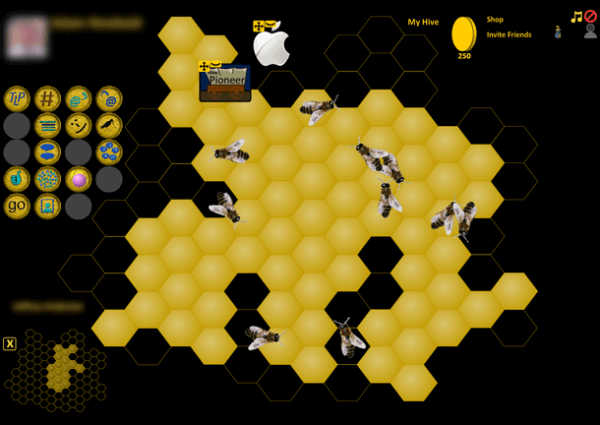I work on a small creative team in Human Resources at Humana, and we’re lucky to have access to useful tools and the permission to autonomously scope out and prototype small ad-hoc projects. So last year, when our company began to learn about the Socialcast API, it wasn’t long before we started to think of ways to use the discussion data to help build and strengthen our internal community.

There were three main things that we focused on as people began to discover and use the platform:
- How to help people measure and monitor their level of participation,
- How to reward people for using the social features correctly, and
- How to help drive adoption and spread the word about the service.
After some quick ideation, we decided to make a kind of social gaming tool that would help with the three main goals. I mainly work in PHP, which is great for interfacing with an API but not always so great for interactive visual stuff, so Steve Hudson on our team brought his amazing Flash skills to the project to create something truly fun and engaging. Dubbed The Hive (a name that goes along with Humana’s internal branding for Socialcast, which is named “Buzz”), the service uses discussion data to build a visualization of people’s personal “hives”–rendered as honeycombs–which light up or darken to indicate their level of participation within the community. People also see some bees flying around their hives; these represent the people with whom they interact most often on Buzz.
To help rapidly build the community, we added our own invitation process, which sends out emails containing the equivalent of an internal affiliate link (which triggers a process that logs the invitation as accepted and redirects the invitee to the internal single sign-on URL to access the community) and awards “coins” for every new registration. Users can spend their coins on decorations for their hives. Finally, to help people become comfortable with social features like #hashtags and @mentions, we use the data from the API to award badges for using these features within Buzz. The response to The Hive has been excellent, and we think it’s helped a lot of people better understand the Socialcast platform and has helped build a solid community.
Rolling out other services
While The Hive has been our most ambitious project to date, I’ve also rolled out a number of smaller services as well. Buzz Map is a simple mashup of data from the Socialcast API, the Google Maps API, and our internal HRIS system. The service plots active community participants on a map, enabling people to better understand the scope of the community as well as to identify the most potentially influential people in any given location.
Buzz Words was something I wrote in an attempt to see if it would be possible to take a quick “pulse” of the community on any given day. I wanted a way to mine the flow of conversation for different topics without having to necessarily read or skim every post, so I made a simple ranked word list. Buzz Words shows words used, sparklines for their use throughout the day, and provides excerpts from messages that contain the most commonly used words.
We noticed early on that lots of people were using the platform to ask questions, which was great, but a few questions would sometimes sink to the bottom of the stream before the right people could notice them. Buzz Unanswered Questions uses the action data from the API to generate a quick list of questions that haven’t yet been answered, and the more helpful people in the community keep an eye on this service to ensure that nobody’s questions are ignored.

I created the Buzz Personal Inventory after several months of using the Socialcast platform, when I became curious about what my contributions looked like when grouped and viewed separately. I wanted a quick way to produce a clean list of my messages, comments, and “likes” without having to wade through lengthy discussions to produce a list by hand. The API made it easy, and I tossed in a quick Google Chart to view posting trends over time.
Later, after wondering about personal patterns in posting frequency and timing, I made Buzz Timing. This service uses the API to look at long-term message activity and render visualizations of message/comment density by time of day. I also added a chart to help identify trends by day of the week. Tools like this enable discovery of personal patterns within a social space, and I think it’s always interesting to see your participation reflected back like this.
Finally
Buzz Recent Active Threads is a simple view of the top 15 threads over the past five days. It provides a quick summary view of the author, message, when it was posted, and how many interactions the message has had. Clicking on the message opens it in Buzz. I wrote this as a quick way to see what people are talking about, especially when I’ve been away from the community for a few days and want to catch up at a glance.
I’ve really enjoyed using the Socialcast API to create these kinds of services. It’s a robust API that’s easy to use, and we wouldn’t have been able to provide these extra things for our community without it. We’ve been able to build games, explore data, and present useful information to people; and we’ve been able to do it all very quickly and without any headaches. Most of these items were developed within a lunch hour and with no budget. We continue to explore ways to use their API for rapid, lightweight development as our community continues to grow.










